Ask any SEO of any skill level and they will tell you that keyword research is one of the most foundational aspects of search engine optimization.
For advanced SEOs, it’s more than just surfacing the best terms for the target audience for any average campaign. Advanced SEOs require fresh data with the latest trends to know what people are searching for now.
This post will cover all of the following topics related to advanced keyword research, including:
- What is Keyword Research & Why is it so Important?
- Where does Keyword Analysis Come into Play?
- How to do Advanced Keyword Research with an SEO Platform
- Analyzing Your Best Opportunities for Organic Search
If you're already familiar with what keyword research is, jump down to our step-by-step process of how to actually get it done!
What is Keyword Research?
Keyword research is the process of identifying which queries customers use to guide their search journey and lead them to relevant information.
This has a direct connection to content marketing – it is the first step in creating content to appeal to your target audience. Terms and phrases that have a good demand are leveraged to create content based on that word or phrase and its specific user intent.
To help, Google provides a free tool called the Google Keyword Planner for Google AdWords users that assigns a monthly search volume estimate for keyword phrases (groups of keywords clustered together) to help researchers. It also provides keyword suggestions to find more potential targets.
But seoClarity users can review the largest keyword data set available: 30+ billion keywords across +170 countries, and updated weekly!
The keyword research database relies on ranking data and user intent to build a profile of top keywords driving traffic to any website, combining the features of several keyword tools into one powerful interface.
Recommended Reading: Dissecting the Challenge of Matching User Intent to Keywords
Why is Keyword Research Important?
Keyword research allows you to discover terms related to a certain topic and uncover their search demand, difficulty score, intent and more.
From there, you can create content based on those words and topics, and get in front of your target audience by appearing on the Google search engine results pages (SERPs) with the content you know they’re looking for.
In fact, it’s not an exaggeration to say that, in today’s times, SEO = content and vice versa. It’s for this reason that you need to discover the right keywords. Discovering and acting upon these content opportunities lead to increased search visibility and increased conversions.
You can’t create content on a whim and hope that it performs well – you need to create data-supported content that you know will perform properly for the right target audience.
This is where keyword analysis goes hand-in-hand with research.
What About Keyword Analysis?
Keyword analysis aims to determine the value of a keyword. It uses various metrics to determine whether the phrase can attract target traffic to the site that is relevant to the company to convert into leads or transactions and eventually repeat customers.
To specify that, marketers have long relied on a range of different approaches. At seoClarity, however, we recommend evaluating and executing your research using a prescriptive approach that relies on criteria like page strength, domain authority, and backlinks - to name a few.
Why Research and Analyze Keywords?
Each day, there are four million never seen before keywords searched for on Google U.S. This means that people are coming up with different ways to ask the search engine questions (and it also further proves the point that a manual attempt at keyword research is not sustainable and won't help you scale).
We research keywords to identify what to optimize the content for. Based on the intent of the keyword we can determine what information to include on a page so it can rank higher and drive the right traffic.
We analyze target keywords to:
A. Prioritize keyword opportunities. Not all phrases you discover during the research can, in fact, drive significant traffic or rankings. Or their popularity is seasonal and there is no need to work on them now. Keyword analysis allows you to prioritize opportunities so that you always work on the ones that can deliver the highest ROI.
B. Learn more about the audience's preferences. Analyzing keyword data like the search volume or CPC cost will reveal a lot about what engages the audience. You will also discover which keywords are the most relevant to your audience (and why).
C. Evaluate the competition. Keyword analysis uncovers who else targets the keywords, and how likely you are to beat them (or what you need to do in order to beat them).
D. Analyze current keywords' performance. The process will also reveal the reasons why certain pages do not perform well for their target keywords, and highlight ways to overcome the issue.
Want to understand what the landscape looks like before you dive into the platform or an SEO tool to conduct research? Simply do a quick Google search to look at the search results for your target terms and topics!
Here, you will be able to surmise who is ranking and competing with you and what the intent is of the content that's ranking. I recommend checking out the SERPs before conducting your research to know you're headed down the right path.
We've covered the seoClarity framework on research and analysis when it comes to this foundational aspect of SEO. Want to learn more about our approach? Check out our post, Keyword Research Strategy: 5 Step Framework to Understand Your Market.
How to do Keyword Research as Part of Your SEO Strategy
Now that I've outlined the need-to-know concepts above, we can dive into the details of how to actually conduct your research.
The processes I've outlined below are ones I use personally and recommend to our clients. It will help you identify head terms to target, long-tail keywords to drive targeted traffic and create the content that will help you achieve your goals.
Our process includes five, easy-to-follow steps:
- Identify the most relevant topics.
- Match topics with seed keywords (or head terms)
- Research more deeply in line with your core topics
- Refine those keywords to identify the biggest opportunities
- Prioritize keywords to focus on first.
Note that I've outlined how to do this using our platform to show you how to do this at scale for your business. If you're looking for a way to research without an SEO platform, there are some great, free keyword research tools available in the market today.
Additionally, seoClarity offers a free version of our Research Grid data set that provides users 5 search queries per day or 10 free queries per day after registration.
Step 1: Identify the most relevant topics for your brand.
To begin, you must build as large of a keywords list as possible. This will help you identify the full market opportunity in your industry.
Thankfully for our clients, seoClarity offers the largest and freshest keyword research tool available anywhere with 30+ billion keyword data set across 170+ countries, allowing users to conduct deep, insightful audience and topic research and analysis, regardless of specific industry knowledge.
But with all of that data, how do you remain focused and narrow the scope?
For more niche industries, we recommend reading our niche keyword research workflow.
For larger enterprise brands, start with what's relevant to you by assessing your competition.
First, identify your true competitors. Find all competitors that compete for search visibility with you. seoClarity creates an exhaustive list of other domains to use in competitive keyword research. In the workflow, we recommend you select up to 50 competitors to ensure you capture the entire market opportunity.
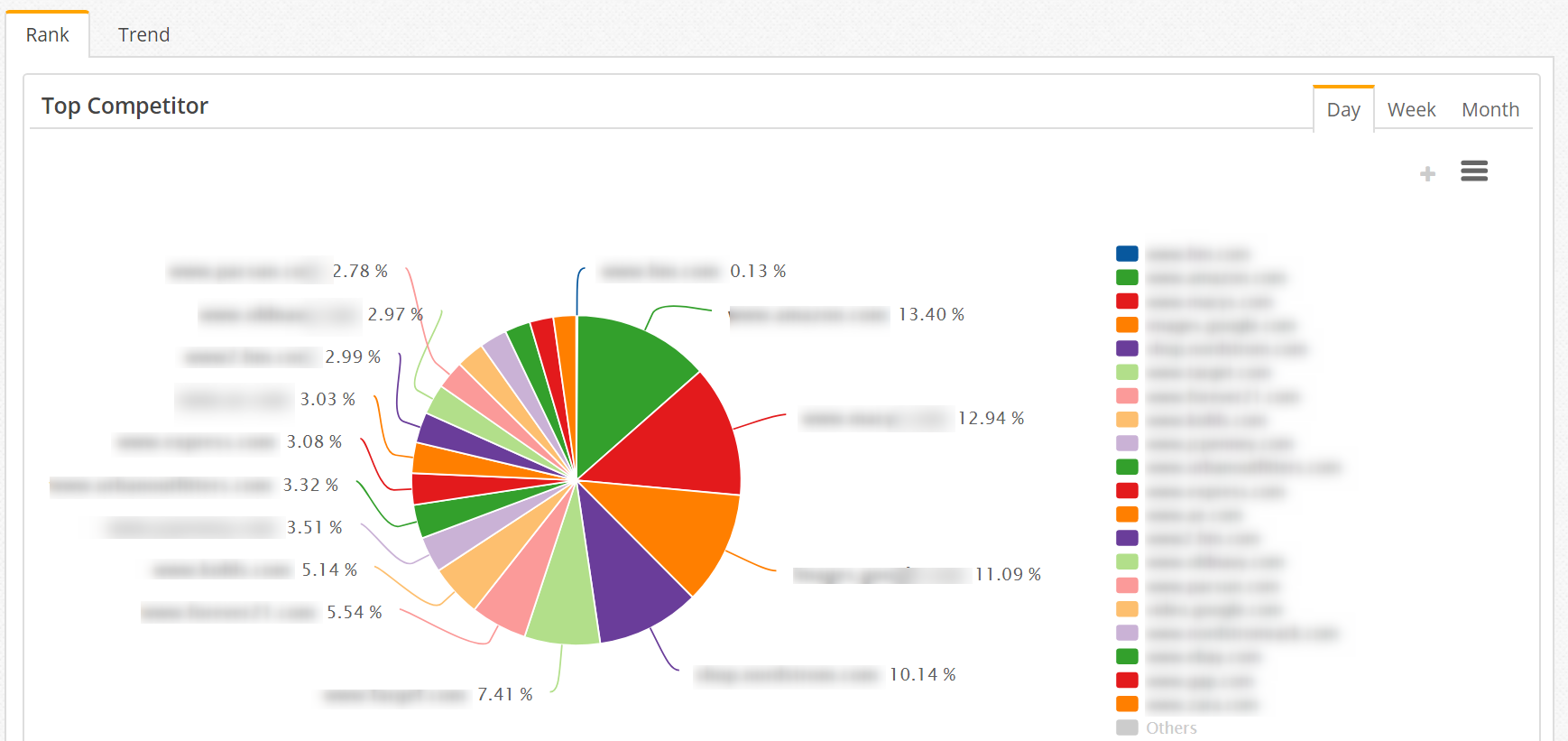
(seoClarity report showing competitor ranking data.)
Then, gather all ranking keywords your competitors rank for. Within your top competitor list, find all of the ranking terms for your competition. To do this, use the Research Grid to access the entire search landscape of a competitor by searching their domain and gathering their ranking keywords.
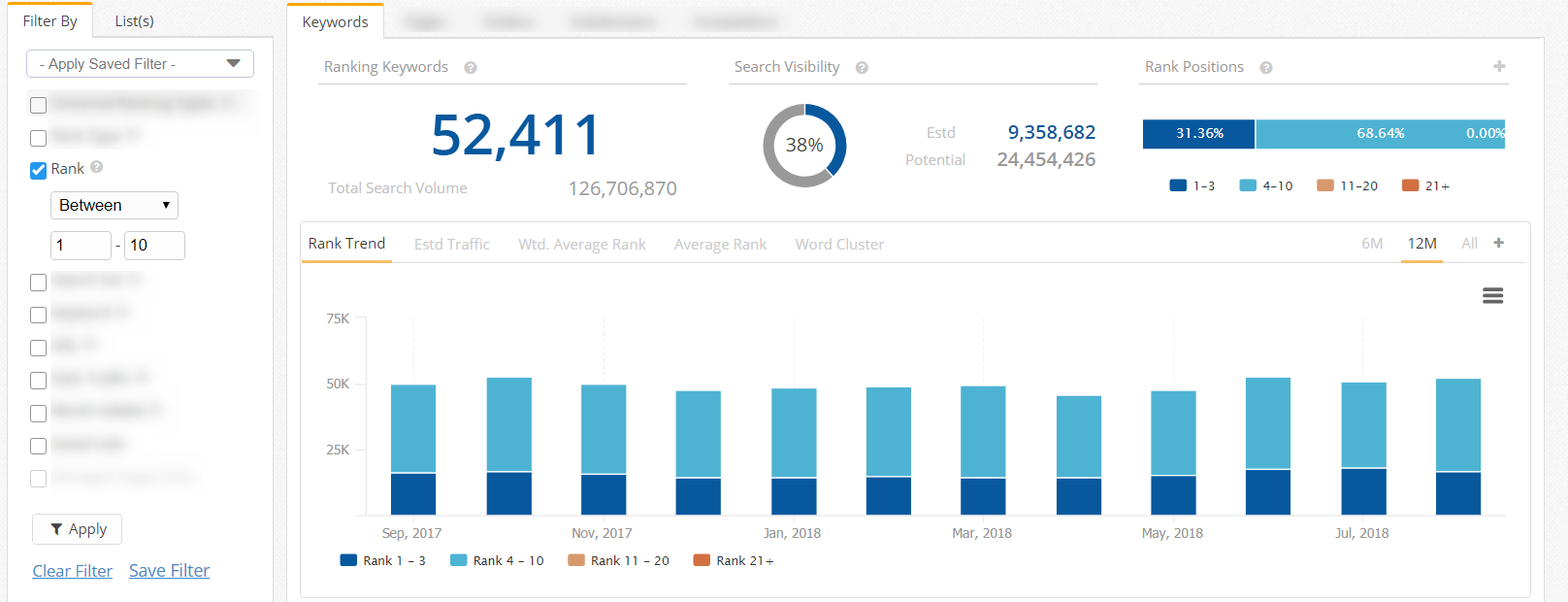
We can even take this one step further in comparing you competitors' data to find the most relevant topics you should target.
Step 2: Match topics to seed keywords (or head terms).
Seed keywords are phrases that describe your product, category, industry or niche that are not related to your brand name. In short, these phrases tell the audience what you do.
You can find them in your business documentation – the company’s business plan or positioning document, for example.
Many sales materials will also include descriptions of your product and positioning.
Your current rankings and traffic data can help identify seed keywords, too. For example, using Search Analytics (Google Search Console data integrated into the seoClarity platform), review what non-branded head keywords drive the most traffic to your site.
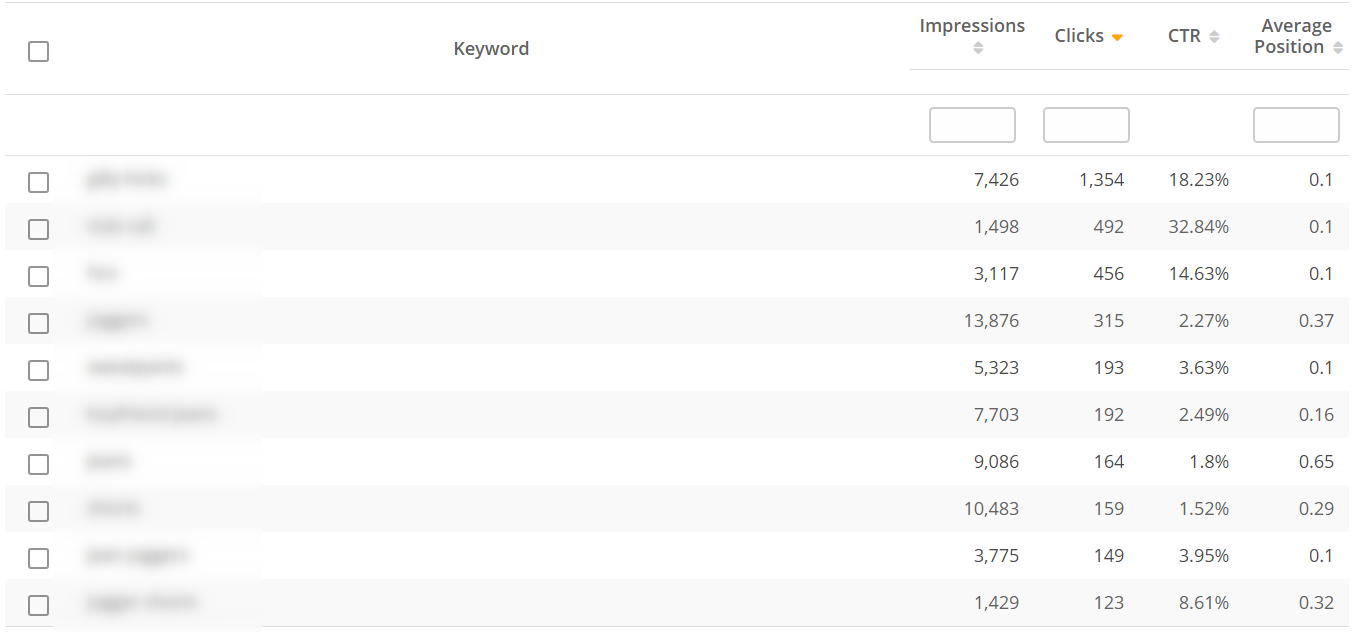 (Search Analytics feature showing seed keywords.)
(Search Analytics feature showing seed keywords.)
Next, identify the variations of the seed keywords. Again, go deeper into Search Analytics to identify:
- Variations of phrases you’ve discovered in the business documentation, for example, and
- Additional, longer phrases that relate to your seed keywords.
Finally, research all of the related terms to your seed phrases using topic explorer. By uncovering additional information about your keyword, related terms with high search volume help search engines determine two things:
- The topic of a page; at least, they help search engines understand your topic better.
- A person’s intent behind the search. By analyzing related keywords on a page, Google can decide why a person conducted a specific search and what information would deliver on that intent.
Topic Explorer allows you to convert seed keywords into topic clusters. Starting off with a seed keyword, you narrow results to focus on specific topics.
Let’s see how it works in practice. Using Topic Explorer, I research keywords associated with the term, “water purifier.” The tool tells me there are over 20,000 related keywords available, 55% of which have informational intent.
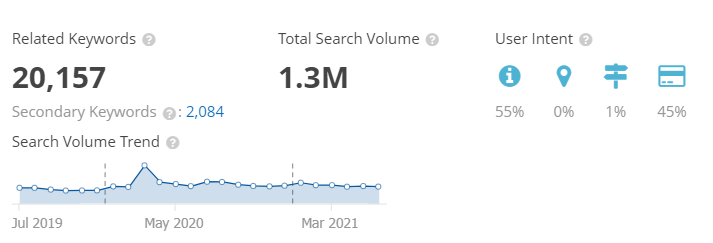
Next, I can group them by topic clusters, reducing the list significantly. Let's say I'm looking for water purifiers for my home. Here I can see high value opportunities related to my topic.
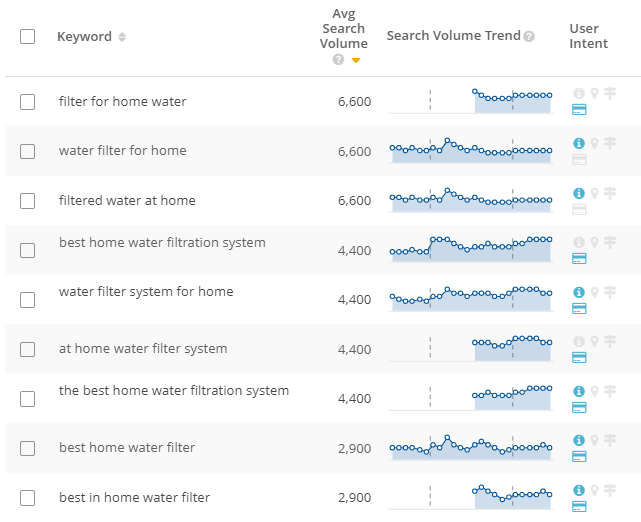
What we now know is that there are likely variations of our seed terms that may need to be included in your massive list.
Step 3: Research further into your topics.
The two previous steps helped you:
a) build a massive keyword set, and
b) identify phrases that best describe your product or services.
You could stop here. Depending on your niche or industry, you could already have thousands, if not more, of potential phrases to target.
But, herein lies the problem: Working off internal data means you’re approaching the topic from a single point of view – yours.
Your audience, however, might understand the topic differently. They might use different terminology to describe it. Look for various other information about it that your current keyword list maybe does not cover.
That’s you need to verify your keywords with the “wisdom of the crowds” approach.
What is Wisdom of the Crowds?
The wisdom of the crowds allows you to tap into a collective knowledge about your audience and industry to understand the keyword landscape better.
Take your seed keywords, for example. You’ve discovered them based on internal information only – your company’s business plan, sales documents, and traffic data. Chances are that many other terms describe what you offer equally well - you just don’t know them.
However, there is someone who might: your competition.
Analyzing their strategies will reveal other keyword opportunities you may be missing.
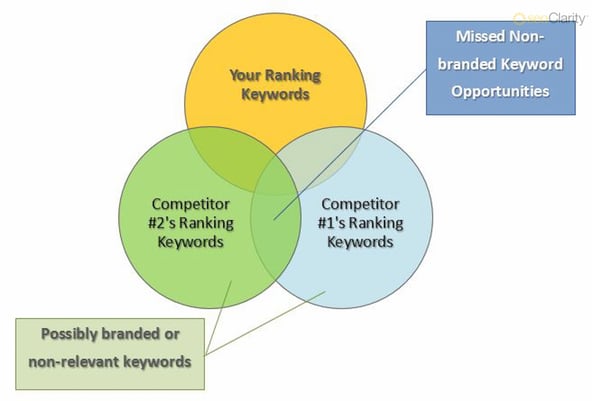
(A visual showing keyword opportunities in the competitor data.)
Ways to Uncover New Keywords Using the Wisdom of the Crowds
From the keywords list you created earlier in Step 1, identify phrases for which at least two or more of your competitors rank. In doing the following, you can compare what keywords your competitors rank for but you don’t.
Your massive keyword list can easily be modified for relevancy by using the Wisdom of the Crowds approach with an excel formula to find keyword that 2 or more of your competitors rank for.
Or, leverage Content Gaps to discover all of your competitors’ keywords. Enter the domain of your choice, or choose from the auto-complete list.
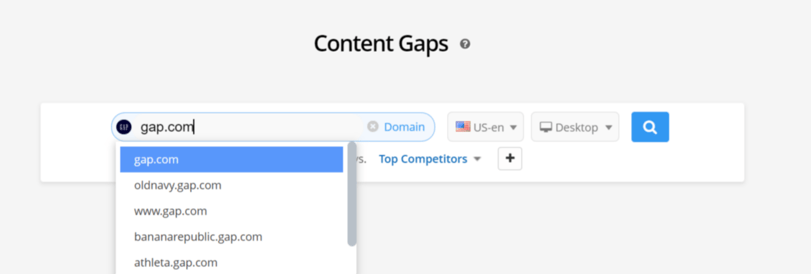
The platform will compare the domain you've entered with all top competitors for that domain. All of this is done for you - there's no need to manually enter competitors' domains. Then, you receive a report on common keywords as well as those that only each domain ranks for.
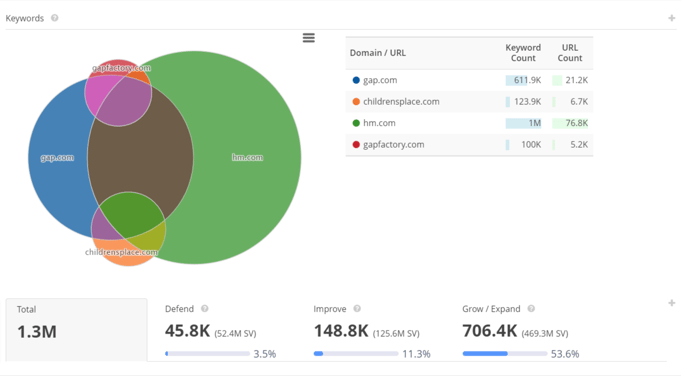 (Keyword opportunities from competitors' data.)
(Keyword opportunities from competitors' data.)
You can clearly see your opportunities of keywords to defend (keywords that are currently driving traffic), improve (keywords ranking around positions 5-20), and grow (relevant keywords where you don’t have relevant content to rank).
Then, you can dig into the specific keyword list to see what competitors rank for what keywords. Use the filtering system to narrow in on keyword opportunities that will be impactful for you.
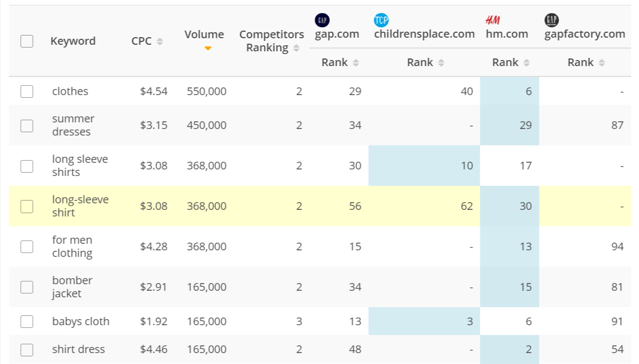 (Content Gaps keyword lists shows how competitors rank.)
(Content Gaps keyword lists shows how competitors rank.)
You can choose to include only the terms in common or you can choose terms that you don't rank for but want to. If your competitors rank for a keyword certain, consider whether or not you should target it, too.
Side note: I recommend you go through the above steps at least once a year – if not more than that. If you work in a large industry with a high rate of change, I’d suggest you follow the above process every six months.
Your next step must be prioritization of these terms you've uncovered.
Assess the keywords’ search volume. Within seoClarity, users can filter by average monthly search volume and discover which topics have the highest demand.
To inform your selection further, map it with the CPC cost for each keyword. Look for those with high bids, which suggest greater profitability of a phrase.
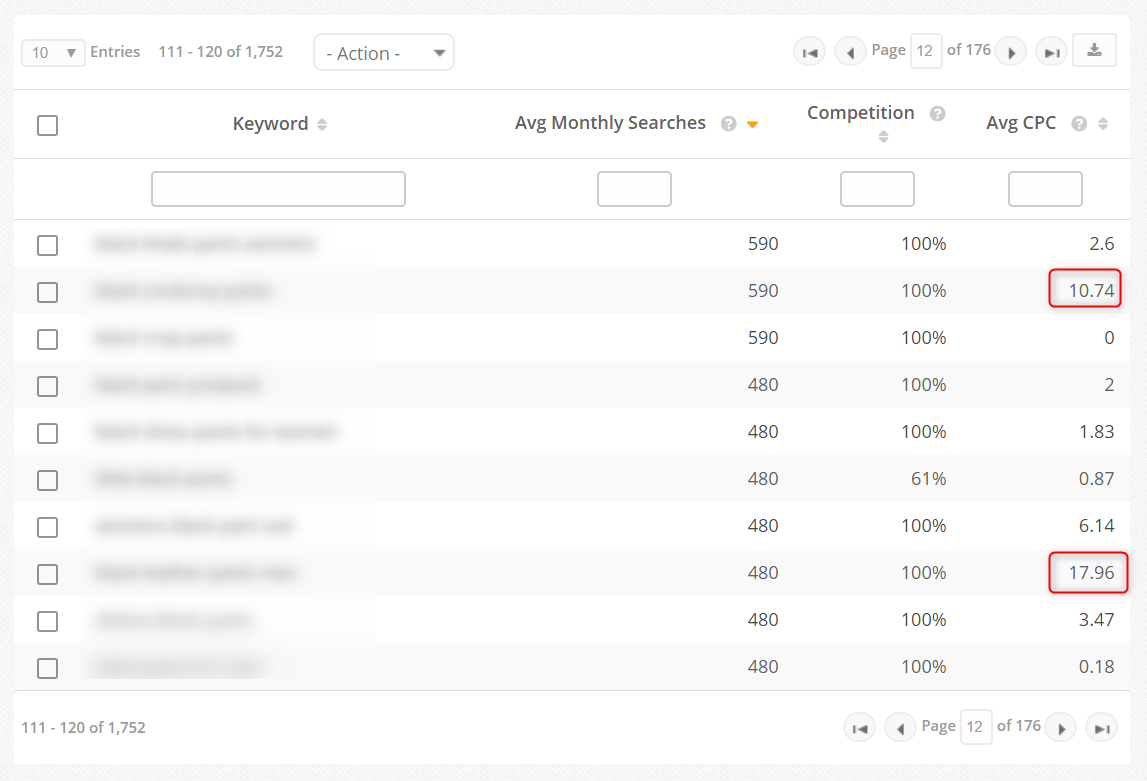 (List of keywords showing highly transactional terms based on the PPC data.)
(List of keywords showing highly transactional terms based on the PPC data.)
Next, match those phrases to your visibility. Look at your rankings at positions 11 – 40. Keywords on these positions might require significantly less work to push to page 1, making them a true low-hanging fruit for your search visibility.
Evaluate keyword difficulty. The keyword difficulty metric allows you to understand how competitive a phrase may be. You can use it in two ways:
- To prioritize which top keywords to start working on first, but also,
- To find low hanging fruit among your keyword set.
Analyze your keyword list for keyword intent. Assess the CPC again. The higher the CPC, the more transactional the phrase might be. Also, look at what words it includes. Terms like “how to…” or “where,” “location,” etc. might suggest other intents – to learn or to go.
Step 4: Refine keyword lists to identify the biggest opportunities.
Another way to evaluate relevance is to use deep machine learning insights of Google SERPs.
Topic Explorer lets you analyze the entire keyword landscape to identify what information related to your keywords searchers are looking for now.
Back to my original search on "water purifier", I can filter in a variety of different ways to get recent searches.
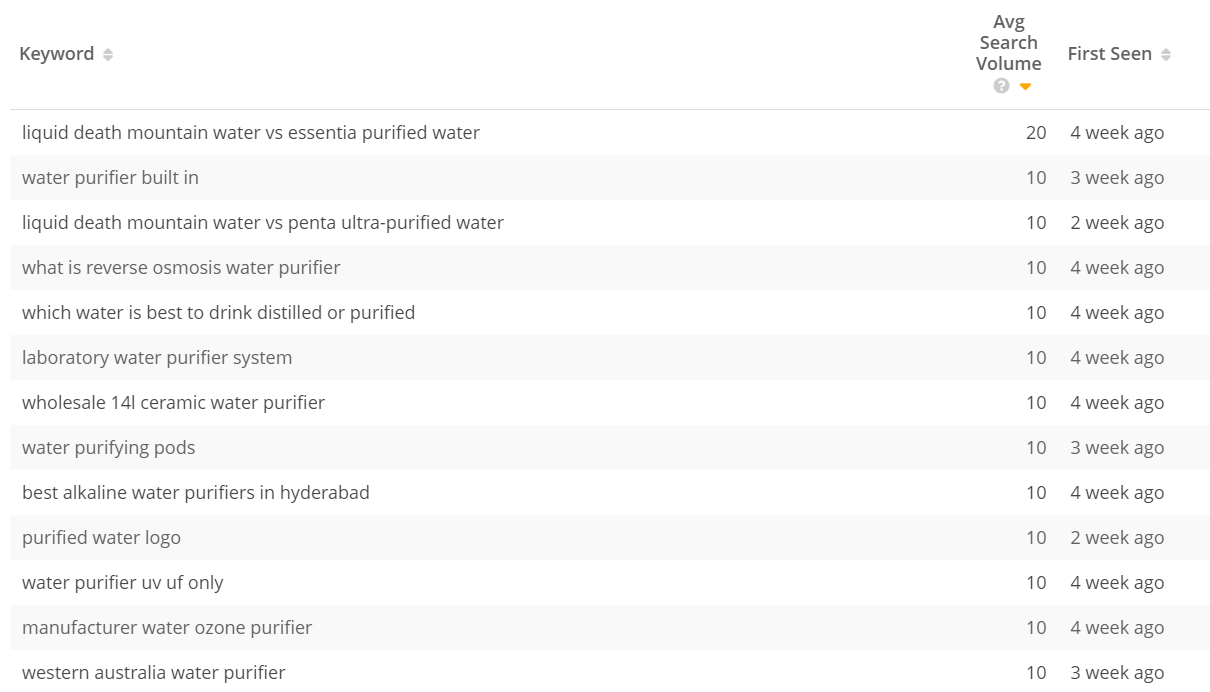
This opens up an entire universe of topics and trends that I can analyze further and determine opportunity for my business.
Additionally, I can filter to see terms and topics categorized by industry type:
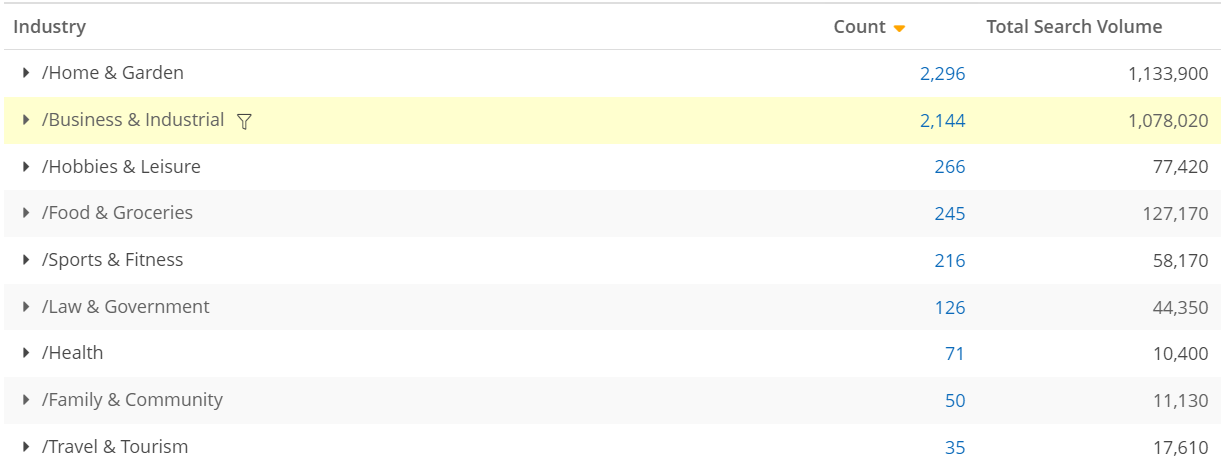
Beyond that, seoClarity allows users to monitor Google Trends data up to 10 topics or search terms in each domain. With Google Trends data integrated into the platform, users can visually compare demand of their target terms by country and YOY patterns on topics and trends you're targeting for your business.
With such insight, I can identify the most relevant topics to target to build a complete search visibility for a specific seed term.
Step 5: Organize and prioritize keywords.
If you followed the steps above, then, most likely, you have a comprehensive list of phrases relevant to your products, services, industry, territory and so on.
You also have an understanding of what's important to your business and what keywords to target first. You also know what could deliver results faster.
Next, you need to organize them to plan your strategy to target those.
Map keywords to existing content. Depending on how much content you have already, some of your pages would relate to the new keywords you discovered. So, as the first step, map your existing pages, blog posts, and other assets to relevant keywords.
Also, consider the intent behind a keyword and its landing page. This will help you avoid mapping a transactional phrase to an informational blog post, for example.
Recommended Reading: Keyword Mapping: Visualizing the Buyer Journey to Improve Your SEO
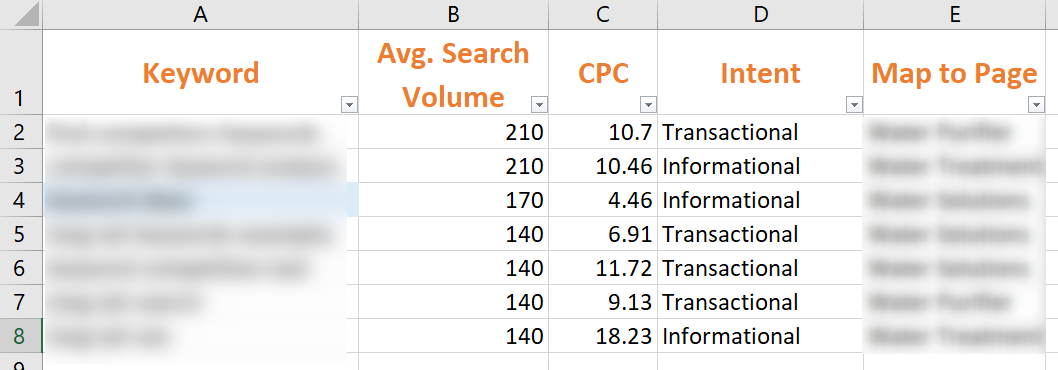
Sample keyword map to determine site strategy and keyword targets.
Organize topics by clusters. We talked about topic clusters before, specifically how creating clusters can help your domain rank better by collecting related information together.
I imagine that you have many potential clusters among your assets already. To identify them, group keywords into topic categories. You’ll quickly see which content assets you already have in a cluster and what you need to develop to complete it. This is a good point to focus attention on proper link building between the clusters.
How to Analyze Keyword Opportunities
Keyword analysis is the closing part of the research process. Although you could conduct the two separately, I always recommend that analysis follows right after the research.
Before I show you the process for analyzing keywords, let's discuss what metrics and tools we'll be using.
Keyword Analysis Metrics
To identify the keywords potential or evaluate it further in a group of other phrases, I recommend you look at the following:
- Search Volume - The average number of monthly searches this phrase receives.
- CPC - How much other companies are willing to spend to place a Google ad for the keyword.
- Trends - What is the interest in the keyword over time.
The search volume suggests the interest in the phrase. Naturally, keywords with the highest number of searches offer the biggest possibility to drive traffic.
But, it's the other two metrics that highlight those phrases' true potential.
Cost Per Click value highlights the commercial potential of a keyword. Basically, if companies are willing to spend money to have their ads appear there, the keyword, most likely, can attract relevant traffic.
So, a keyword with a relatively high search volume and CPC cost will, most likely, offer a better potential than a one with just the high volume but no Google Ads.
Note: by commercial potential, I mean the keyword's ability to drive relevant traffic at a specific stage of the buying cycle. It does not mean that those people are ready to buy right away. But it suggests that they are at some point of the buying journey.
Then, there's the trend. This metric highlights when customers search for the keyword throughout the year. This metric does not reveal anything about the phrase's commercial potential. However, it can help you prioritize the best opportunities. Because, if a keyword experiences only a spike of interest at the start of the year, then, there is no point in working on it right after that peak has waned. You can prioritize it for later, and use the time now to work on phrases with high interest throughout the year.
Keyword Analysis Tools
seoClarity offers two specific capabilities that help with analyzing keywords: Topic Explorer and Keywords.
Both are part of the Research Grid and you use both in the keyword research process. You've seen how they work earlier in the post.
Topic Explorer allows you dive deep into the analysis metrics mentioned above. It lists the average search volume, the CPC cost and the trend for each keyword you want to analyze.
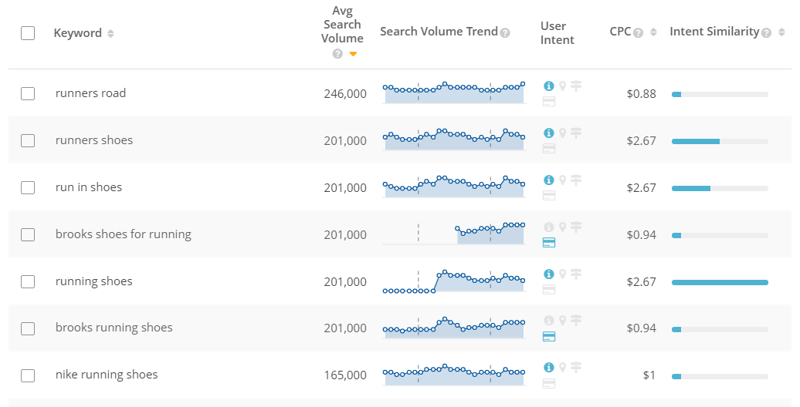
Note that the tool also reports on the keyword intent, providing you with even more information to optimize for the keyword better.
Keywords, also a part of the Research Grid, allows you to evaluate a keyword at a time, providing in-depth information about it, including top-ranking domains and additional information about them.

The Keyword Analysis Process
Finally, let me outline the simple process for analyzing keywords.
Step 1. Create a shortlist of target keywords to analyze.
The step may seem obvious but I have seen SEOs evaluate all keywords they've found during the research stage, regardless of whether those phrases match their products or services.
So, as the first step, go through the list, eliminating phrases that do not sound relevant, for example.
This will shorten the list, and let you evaluate only the real opportunities.
Step 2. Evaluate the search potential by the Search Volume and CPC cost
Just like we discussed above, filter keywords by the search volume and their CPC cost.
Remember, the more companies are willing to bid on a keyword, the greater its commercial potential (even if it has the informational intent.)
Step 3. Assess the competition
In the Topic Explorer, click on the little magnifying glass beside each keyword to view the list of it's top-ranking pages. Your goal is to find keywords with great potential but not many major competitors targeting them.
This isn't always possible, of course. But it's worth undertaking such a research to help prioritize opportunities further.
Step 4. Review the keyword trend
At this stage, you should have a far shorter list of keywords. So, as the last step, assess their trends, splitting the list into keywords with seasonal and all year round popularity.
The Final Word: Prioritize All Stages of the Buyer’s Journey
Here’s a keyword research mistake I see companies making over and over again: they prioritize only transactional keywords, leaving many open opportunities to engage other potential customers as well.
Success in the search requires long-term thinking. Persistence is key – as well as targeting the full market opportunity.
So, instead of just focusing on sales, work towards attracting customers at every stage of their journey – from those who only began considering what you’re selling, to people actively looking for a place to buy it from. You can do this with the following tactics:
- When researching keywords, for example, filter your list by intents, too. Then, prioritize keywords from each segment, not just the transactional one.
- As you map content to keywords, consider what phrases customers early in the buying cycle would use, too. Then, include that content in your topic clusters.
- Do not ignore informational keywords. They might help attract visitors who could turn into customers in the future.
Don't leave important keyword opportunities on the cutting room floor. Schedule a demo today and see how the freshest and largest keyword data set can propel your business forward.
Editor's Note: As you're aware, this industry grows FAST. This post was originally published in September 2018 and has been updated to include the latest insights on keyword research.






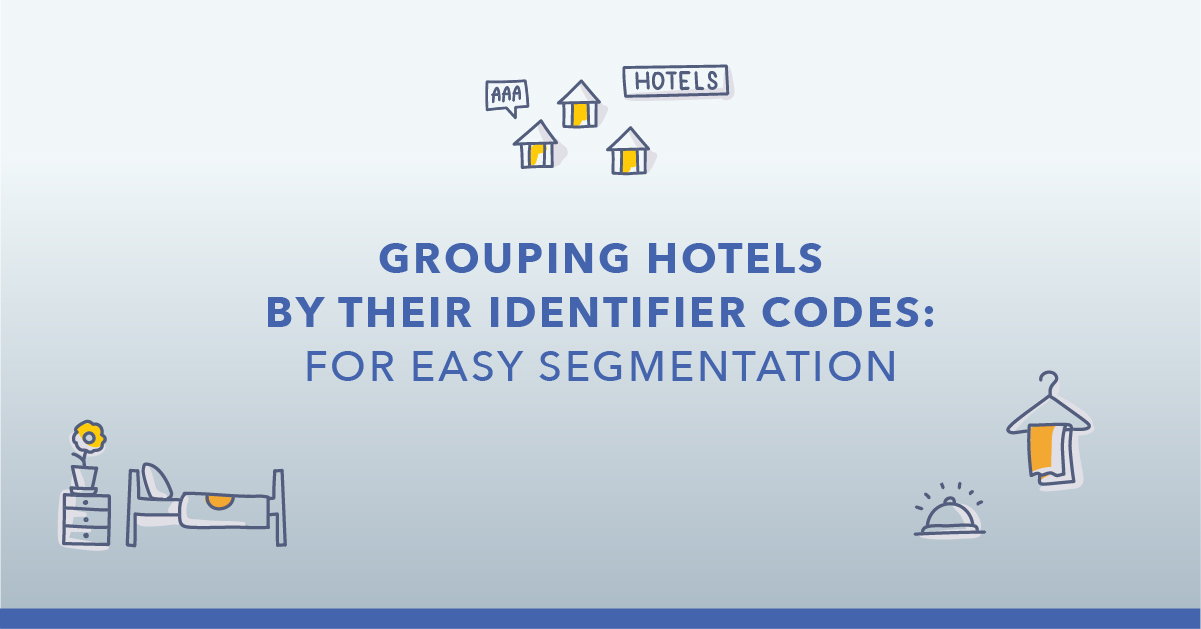
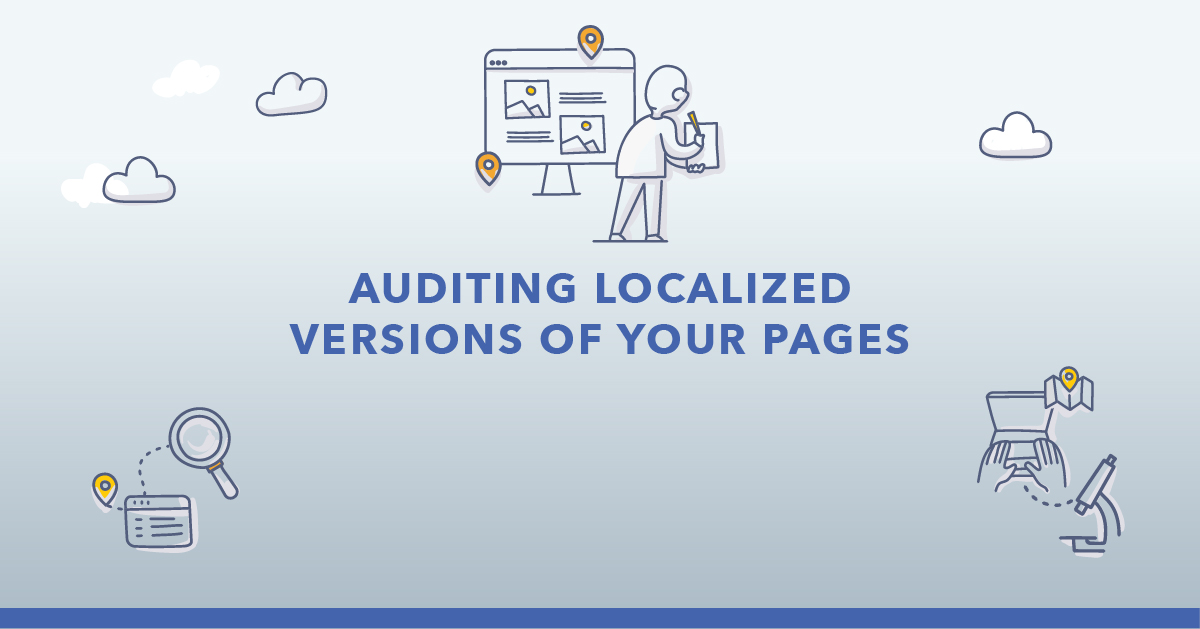
2 Comments
Click here to read/write comments